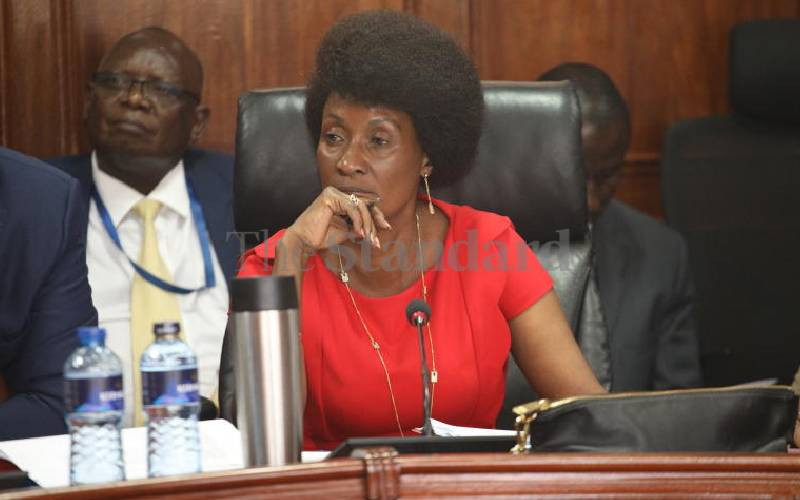A report conducted by an education task force has revealed that gender disparity among pupils in Kakamega County is high.
The task force observes that several factors have led to the disparity among them lack of equity in distribution of resources, high cost of secondary education, child labour affecting boys at primary school level and early marriages in girls.
The report reveals that Mumias region has for years been supported by Mumias Sugar Company, thereby giving them a head start in education. The task force was chaired by Prof Laban Ayiro.
It says that at the primary school level, the number of girls exceeded that of boys and this is attributed to child labour among the boy child, and the lure of boys to the boda boda business.
"When it comes to secondary school, 43.71 per cent of boys perform well compared to girls and this is because most girls are burdened with high fees, and that most parents prefer to school boys to girls," Prof Ayiro said.
He said Mumias sub-county performed well compared to Malava. The task force attributes this disparities to inequitable resource distribution, retrogressive cultural practices, divisive politics and poor dialogue between education officers and teachers.
Gender performance
"Mumias sub-county has a population of 228,993 and it enrolled 63,089 pupils while Kakamega North sub-county with a population of 221,145 enrolled 58,379. When it comes to performance, Mumias had a mean grade of 284.64 while Malava had 248.7, and this will have an influence on the county's Vision 2030 if standards are not reversed,” he said.
The task force recommends that more schools and accessible roads be built in areas where there is uneven demographic distribution of schools in order to enhance pupils' access to primary schools.
"The county government should set up a school for visually impaired children because there is no school to cater for this special group of children. This leads to reluctance in implementing guidelines of special education policy, inadequate tools and skills for assessing and identifying learners with special needs and teachers," Ayiro noted.
He said primary school completion rate for girls has been higher than that of boys in the past four years while secondary completion for boys in 2013 was 10,585 and girls 9,165.
Ayiro's task force recommends radical measures aimed at improving performance in secondary schools. In 2013 out of 20,588 students who sat for the KCSE examinations, only 60 candidates obtained As, 318 got A-s.
 The Standard Group Plc is a
multi-media organization with investments in media platforms spanning newspaper
print operations, television, radio broadcasting, digital and online services. The
Standard Group is recognized as a leading multi-media house in Kenya with a key
influence in matters of national and international interest.
The Standard Group Plc is a
multi-media organization with investments in media platforms spanning newspaper
print operations, television, radio broadcasting, digital and online services. The
Standard Group is recognized as a leading multi-media house in Kenya with a key
influence in matters of national and international interest.
 The Standard Group Plc is a
multi-media organization with investments in media platforms spanning newspaper
print operations, television, radio broadcasting, digital and online services. The
Standard Group is recognized as a leading multi-media house in Kenya with a key
influence in matters of national and international interest.
The Standard Group Plc is a
multi-media organization with investments in media platforms spanning newspaper
print operations, television, radio broadcasting, digital and online services. The
Standard Group is recognized as a leading multi-media house in Kenya with a key
influence in matters of national and international interest.








